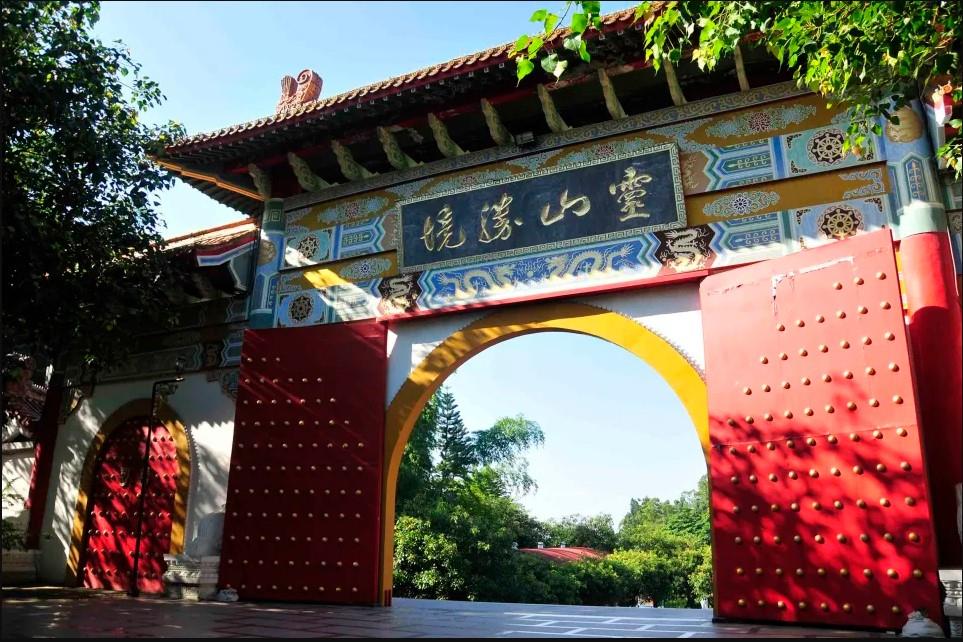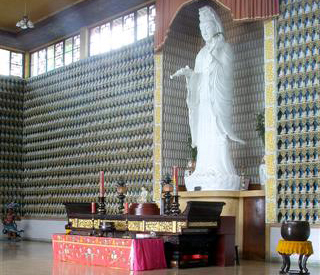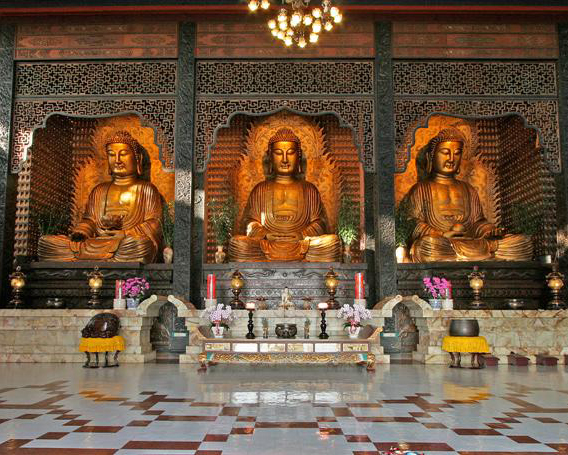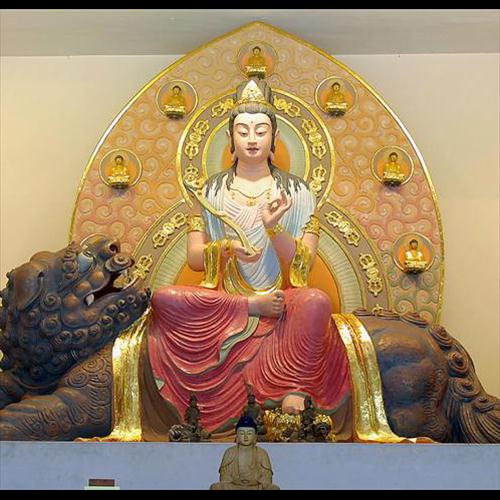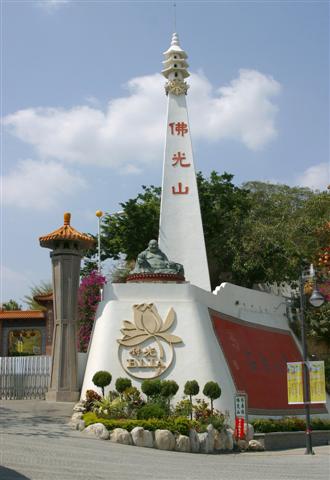The Museum of Fo Guang Shan History is located on the second floor of the Tathagata Hall, and was established on May 16th 1997, in time for the 30th Anniversary of Fo Guang Shan.
The first thing that fills one's sight on walking into the museum is a bird's eye view map of Fo Guang Shan. From this one can see the five peaks of Fo Guang Shan, which is described in the verse: “One mountain with five peaks is rare to see, two colleges and the sevenfold assembly is rare to behold”. This also represents the spirit of compassion, wisdom, vows and practice as shown by the Avalokitesvara, Manjusri, Ksitigarbha and Samantabhadra Bodhisattvas.
Inside one can see the history of Venerable Master Hsing Yun's over fifty years of propagating the Dharma. During the forty years of Fo Guang Shan, he has used the Four Objectives of: “propagating buddhism through culture, fostering talent through education, benefiting society through charitable programs, purifying human minds through buddhist practice” The museum is thus divided into sections of literary publications, educational activities, charitable works, the Dharma mission of the Founder Venerable Master, Buddha Light International Association, and the Dharma lineage of the Fo Guang Shan order. It includes historical photographs, memorial artifacts, and many displays showing the contributions of Fo Guang Shan to society, the nation, and world Buddhism.
For example, the gold medal winning Fo Guang Buddhist Dictionary, the new annotated Fo Guang Buddhist Dictionary, international academic conferences, the world Buddhist examination, many journals and periodicals including Awakening the World, Pumen Academic Journal and Merit Times, and the over one hundred translations of Venerable Master's writings from the International Translation Center.
In the display dedicated to Buddhism and creativity, one can see many history making innovations used by Venerable Master during his time of propagating the Dharma. For example, the first Buddhist LP, fine class publication of Buddhist books, and taking traditional Buddhist chanting onto the international stage.
There are Venerable Master's manuscripts, pictures and calligraphy. A chart showing the layout of the organization of Fo Guang Shan and structure of the Buddha Light International association (BLIA) clearly indicates the equal cooperation between the monastic and lay bodies in the teaching of Buddhism. One can also see Venerable Master's international spirit in his exchanges and friendship with other religions.
In summary, the Museum of Fo Guang Shan History clearly shows the process of Buddhism as it moved from India to China to Fo Guang Shan, and Venerable Masters ideal of Humanistic Buddhism to create a Pure Land for humanity. We hope that the aim of “the Buddha's light shines upon the world, the Dharma waters flow across the land” may come true.
